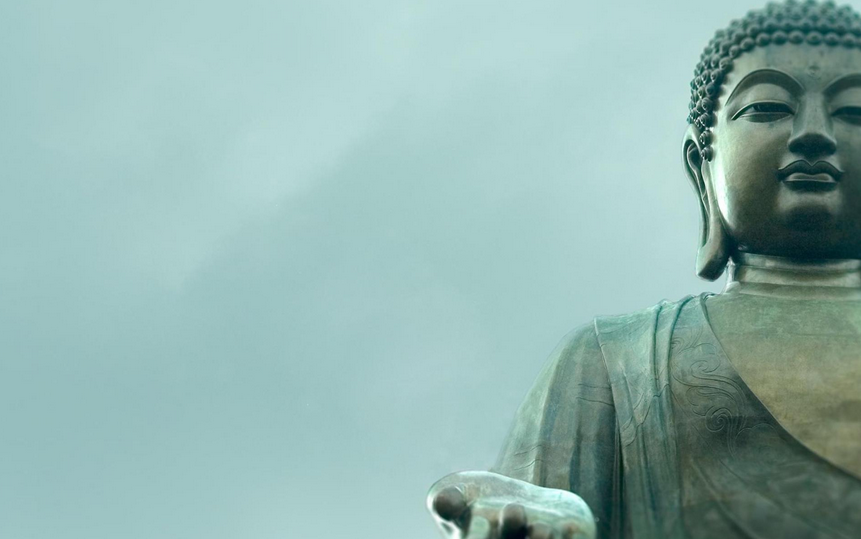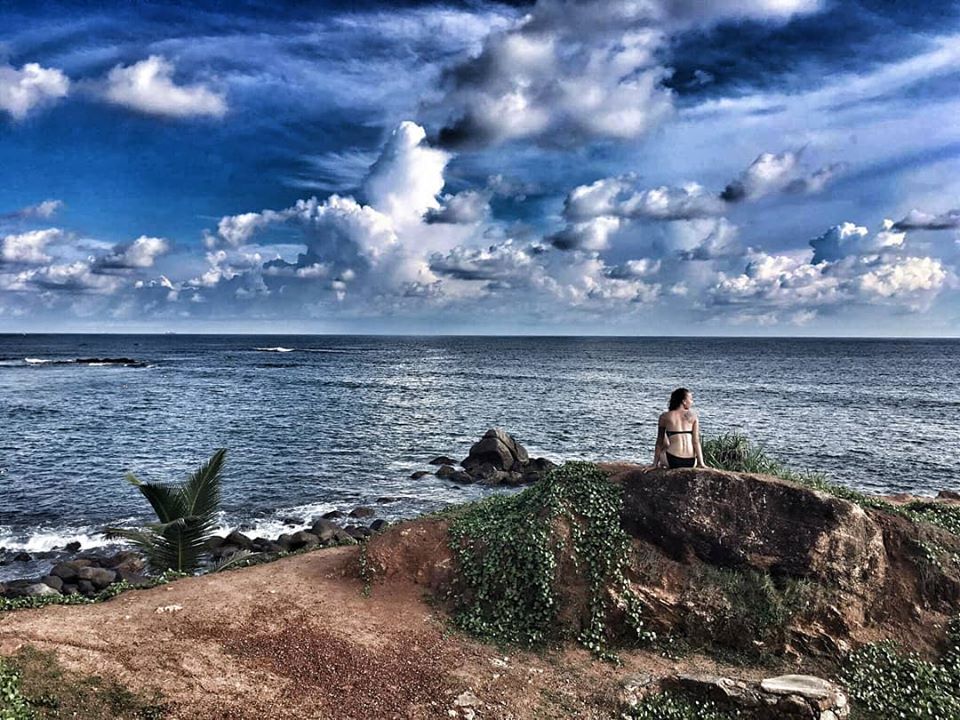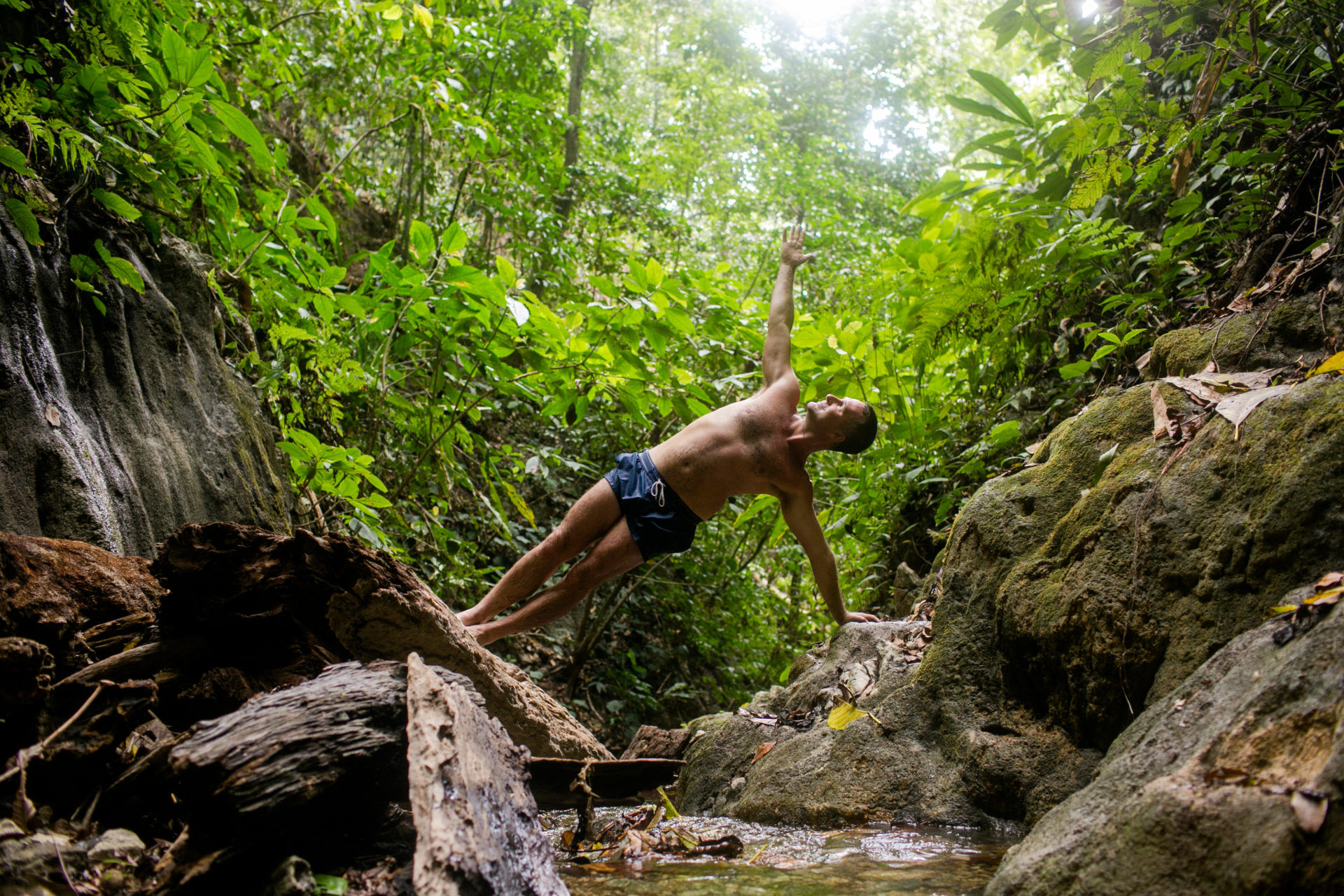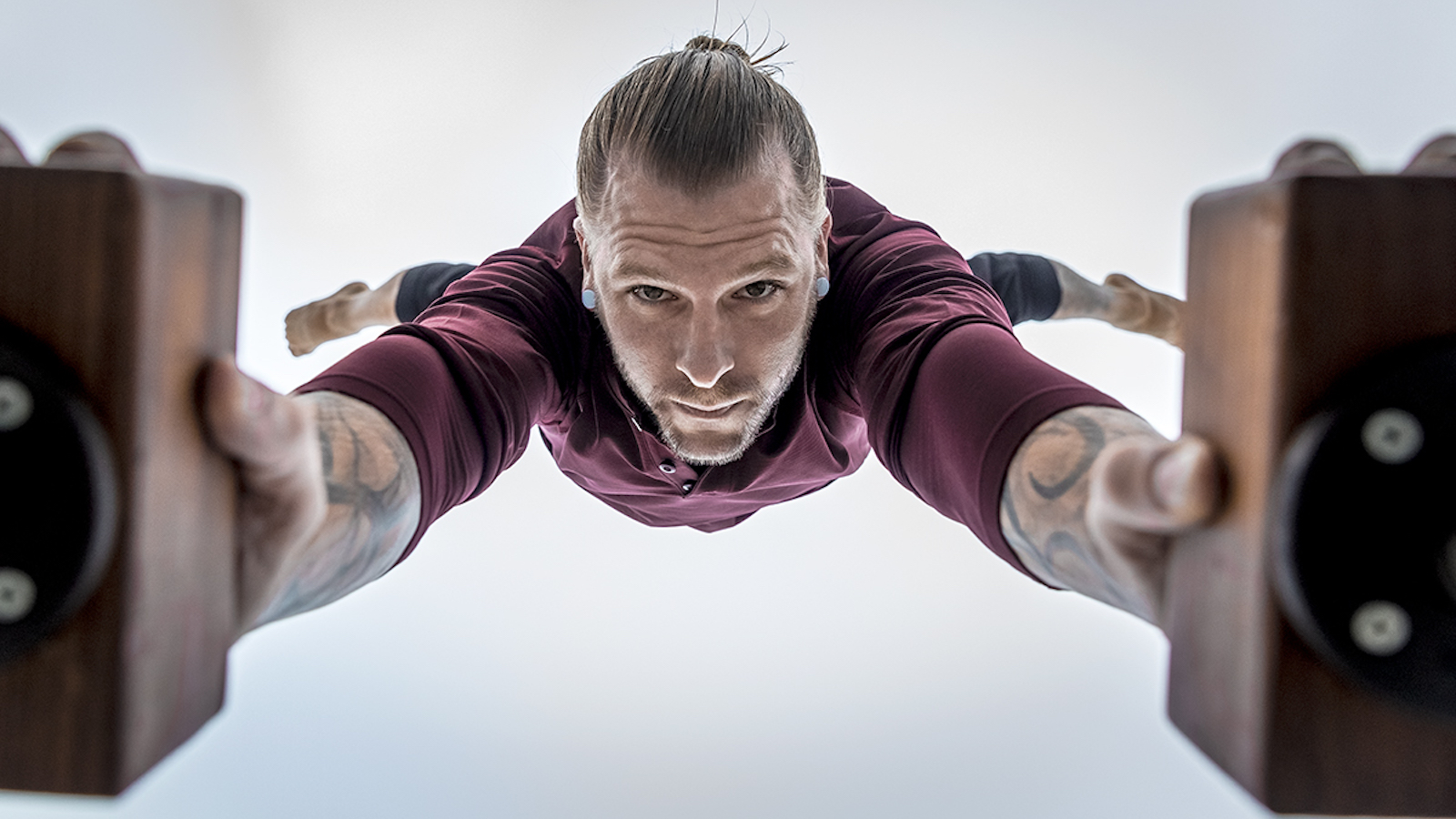I’ve spent the last year fine-tuning and teaching a History of Yoga workshop curriculum. It’s meant listening to endless history podcasts, combing through interviews with senior teachers like Judith Hanson Lasater and Richard Rosen, reading arresting new scholarship from academics like Mark Singleton and James Mallinson, and thumbing through primary texts like Light on Yoga and the Bhagavad Gita.
You know that old cliché about how if you really want to learn something, you should teach it? It’s true. I’ll never look at my yoga practice the same way again. And after reading this, you may not, either.
Here are a few unexpected revelations:
[av_hr class=’invisible’ height=’50’ shadow=’no-shadow’ position=’center’ custom_border=’av-border-thin’ custom_width=’50px’ custom_border_color=” custom_margin_top=’30px’ custom_margin_bottom=’30px’ icon_select=’yes’ custom_icon_color=” icon=’ue808′ font=’entypo-fontello’ av_uid=’av-1kkxx6af’]
1. Yoga history is a total mash-up.
It’s quintessentially postmodern. (That’s a big word that basically means questioning long-standing truth narratives and lifting up identity politics and personal narrative as sources of insight and wisdom. Whew, right?) Postmodernism reminds us to think critically and take every perceived notion of “truth” with a grain of salt. It’s personified by creative artists like animator Sanjay Patel and hip-hop musician MC Yogi, both of whom blend ancient and contemporary Hindu traditions in electric cultural mash-ups of their own.
Postmodernism reminds us that our job as yoga historians is to ask: who preserved yoga history in this particular way? What purpose or agenda did that preservation serve? And whose voices are missing here?
[av_hr class=’invisible’ height=’50’ shadow=’no-shadow’ position=’center’ custom_border=’av-border-thin’ custom_width=’50px’ custom_border_color=” custom_margin_top=’30px’ custom_margin_bottom=’30px’ icon_select=’yes’ custom_icon_color=” icon=’ue808′ font=’entypo-fontello’ av_uid=’av-1h6iymjb’]
2. Patanjali probably wasn’t just one dude.
That guy most of us know as the granddaddy of yoga philosophy, the scholar-priest who codified the Yoga Sutra for the first time? The one who likely lived sometime in the 2nd or 3rd century? Yeah, no. He very possibly didn’t exist. The compilation of the Yoga Sutra that historians have long attributed to him was likely the work of many priestly men. (But, then again, who really knows for sure?)
[av_hr class=’invisible’ height=’50’ shadow=’no-shadow’ position=’center’ custom_border=’av-border-thin’ custom_width=’50px’ custom_border_color=” custom_margin_top=’30px’ custom_margin_bottom=’30px’ icon_select=’yes’ custom_icon_color=” icon=’ue808′ font=’entypo-fontello’ av_uid=’av-1arx2b9z’]
3. Yogis weren’t always mainstream.
In fact, as recently as the early 20th century, yogis were often perceived as wild renegades, dangerous rogues, and unruly highwaymen rife with black magic. No reasonable, respectable person wanted to be around them.
Those sadhus who stood on one leg in the middle of a river for two years straight? The same ones who practiced expelling their semen and then recalling it (yes, really)? They’re a world apart from the pastel-clad soccer moms and the lithe former ballet dancers you see now splashed on yoga magazine covers.

When Swami Vivekananda came to speak at the 1893 World Parliament of Religions in Chicago — the moment that’s often recognized as the birthplace of yoga in America — he hesitated to speak of any postural (or hatha) yoga, focusing mainly on meditation and pranayama, for fear of alienating Westerners. That’s how unpopular and renegade most yogis were.
Even 40 years ago, many yogis were often still perceived as countercultural hippies. It’s only been within the last two decades or so that they’ve really found their place in bourgeois mainstream America. And now, of course, they’re at the center of a mass cultural phenomenon.
4. Asana itself is quite new.
Most of the poses you know so well from class — like Downward Dog or Triangle — are relatively contemporary creations. (As in, maybe a hundred or so years old.) Truth be told, the body didn’t even really get involved in yoga until maybe the 13th or 14th centuries. Prior to that, any asanas were probably seated poses like Ardha Padmasana (Half Lotus) or Virasana (Hero), the kind designed for ease of pranayama and meditation.
Hatha yoga poses developed sometime in the Middle Ages, right around the writing of the Hatha Yoga Pradipika, when an explosion of Tantric philosophy finally brought the body into the picture. (And yes, Tantra is about so much more than sex, in spite of notorious stereotypes that’ve arisen over the years.) Even those poses were still fairly simple, though they did much to challenge the sacred/profane binary that had previously denigrated the body as less holy than the spirit. Once Tantra emerged, the body finally became a locus for the sacred; literally, a temple for the divine.
Most of the standing poses we practice now, though? They’ve only been around a few hundred years at most. And many of them are much newer than that.
[av_hr class=’invisible’ height=’50’ shadow=’no-shadow’ position=’center’ custom_border=’av-border-thin’ custom_width=’50px’ custom_border_color=” custom_margin_top=’30px’ custom_margin_bottom=’30px’ icon_select=’yes’ custom_icon_color=” icon=’ue808′ font=’entypo-fontello’ av_uid=’av-13f3c5ef’]
5. The practice as we know it is a total hybrid.
British military exercises. Scandinavian gymnastics. European curative medicine. Indian nationalist bodybuilding techniques. Freudian and Jungian somaticization of the emotions. Toss in New Age spirituality and a pop cultural emphasis on positive thinking, and you’ve got a diverse practice that spans the globe.
If you’ve ever heard your teacher wax poetic about how early yogis were doing sun salutations on the banks of the Ganges River 5000 years ago, now you know: they’re full of crap. Nobody was doing Surya Namaskara A 5000 years ago.
Whenever I teach sun salutations now, I point out that Mark Singleton and his fellow academics have doggedly uncovered the reality that Surya Namaskara A and B are maybe a hundred years old at best. (Check out Singleton’s book, “Yoga Body: The Origins Of Modern Posture Practice,” for the ultimate in recent scholarship on the history of contemporary asana.)
Mind. Blown.
[av_hr class=’invisible’ height=’50’ shadow=’no-shadow’ position=’center’ custom_border=’av-border-thin’ custom_width=’50px’ custom_border_color=” custom_margin_top=’30px’ custom_margin_bottom=’30px’ icon_select=’yes’ custom_icon_color=” icon=’ue808′ font=’entypo-fontello’ av_uid=’av-z9e0dhz’]
6. Women are often invisible in yoga history.
And it’s the job of contemporary historians to bring them back into the picture.
Michelle Goldberg’s 2015 biography of Indra Devi, “The Goddess Pose: The Audacious Life of Indra Devi, the Woman Who Helped Bring Yoga to the West,” was a crucial first step into reclaiming the feminine side of yoga history. Goldberg is more often known as a writer of politics and religion, so she brings a particularly sharp cultural lens to excavating the “woman factor” here.

Turns out Devi, née Eugenie Peterson, the Russian-aristocrat-turned-world-traveller, fought to study with Krishnamacharya, only to be turned away because she was a woman. The reason she was finally allowed to stay was that the Maharaj of Mysore stood up for her. Devi was one of Krishnamacharya’s key disciples, right up there with BKS Iyengar, Pattabhi Jois, and TKV Desikachar, though she isn’t often included in that nexus of primary teachers responsible for spreading yoga across the West.
Dive into Goldberg’s book for more dishy history, like how Devi opened the first yoga studio in Hollywood in 1947, taught starlets like Greta Garbo and Gloria Swanson, and later ended up moving to Mexico and Buenos Aires.
[av_hr class=’invisible’ height=’50’ shadow=’no-shadow’ position=’center’ custom_border=’av-border-thin’ custom_width=’50px’ custom_border_color=” custom_margin_top=’30px’ custom_margin_bottom=’30px’ icon_select=’yes’ custom_icon_color=” icon=’ue808′ font=’entypo-fontello’ av_uid=’av-tlzi4d3′]
7. Context is everything.
Your understanding of yoga history depends so much on your cultural context, your moment in time, and your teacher’s perspective. When you learn yoga history from me (as a white, cisgendered, upper-middle-class woman in the world), you’ll get a mish-mash of self-consciously postmodern, progressive, queer, countercultural, intersectional perspectives. If you’d studied with premier German yoga historian Georg Feuerstein 30 years ago, you’d have gotten a whole different (incredible) vault of knowledge. Neither is right or wrong. Both are useful. That’s why we need to continue seeking out new teachers and new sources. Always. Don’t get complacent. Curiosity is key.
[av_hr class=’invisible’ height=’50’ shadow=’no-shadow’ position=’center’ custom_border=’av-border-thin’ custom_width=’50px’ custom_border_color=” custom_margin_top=’30px’ custom_margin_bottom=’30px’ icon_select=’yes’ custom_icon_color=” icon=’ue808′ font=’entypo-fontello’ av_uid=’av-pce9hav’]
8. “Yoga is about half-Indian and half-Californian.”
I overheard this tongue-in-cheek quip some time ago on a podcast by Lucas Rockwell, listening to an interview while I did my home practice, and laughed out loud. No truer words have been spoken. One thing we know for sure is that yoga originated in India. That’s undeniable. But, as for the spread of yoga in the West? California has been hugely influential: a fertile soil for New Age thinking, body insecurity (hello, Hollywood), and health fads, all of which exploded across the country thanks to the power of celebrity. You can think of the evolution of yoga in America less as a movement from East to West and more as an ongoing dialogue, a cultural conversation between the two.
[av_hr class=’invisible’ height=’50’ shadow=’no-shadow’ position=’center’ custom_border=’av-border-thin’ custom_width=’50px’ custom_border_color=” custom_margin_top=’30px’ custom_margin_bottom=’30px’ icon_select=’yes’ custom_icon_color=” icon=’ue808′ font=’entypo-fontello’ av_uid=’av-kosqouv’]
9. There is no “one true yoga.”
There are only variations on a theme, ever-evolving.
If old-school yogis from the 4th century walked into your Monday happy hour Power Vinyasa class, they’d have zero idea what the heck you were doing jumping around doing push-ups. They certainly wouldn’t recognize it as yoga. Just as, for most contemporary gym rats, sitting around meditating for hours at a time and living the ascetic, celibate life of a wandering yogi doesn’t sound much like the $16 drop-in class we’d willingly toss on our credit cards.

So if somebody says their yoga is “right” and yours is “wrong,” or that that Vino & Vinyasa event or your Dog Yoga class or the brewery-hosted Yin workshop isn’t legit, have no fear. Yoga is in constant co-creation. It will continue to evolve. There is no one right way.
[av_hr class=’invisible’ height=’50’ shadow=’no-shadow’ position=’center’ custom_border=’av-border-thin’ custom_width=’50px’ custom_border_color=” custom_margin_top=’30px’ custom_margin_bottom=’30px’ icon_select=’yes’ custom_icon_color=” icon=’ue808′ font=’entypo-fontello’ av_uid=’av-f08k3dj’]
10. The history of yoga is a history of scandal.
I know, I know; it seems incongruent, given the fact that yoga, at its heart, is an ethical system for being clear-mindedly in the world, for lending ease and peace to all sentient beings, and for causing as little suffering as possible. But, as with all institutions and systems like the church or the government, when there are patriarchal guru relationships ensconced in sometimes-unhealthy power dynamics, shit happens.
The deeper you dig, the more you realize the history of yoga is rampant with sexual assault, abuse, harassment, and impropriety. A quick rundown of even the last 75 years reveals sordid sexual scandals, substance abuse, frozen pensions, adultery, exploitation, an epidemic of narcissistic gurus, and more.
I hesitated to include those scandals the first few times I taught new teacher trainees. I didn’t want to cast a shadow on the history of a beloved practice. This last time around, though, in light of the current events unfolding in the Presidential election, I realized it was essential to include the shadow side along with the light. The burgeoning teachers and I had a fascinating, sobering conversation about sex, power, ethics, and what it means to be a teacher of integrity. It was immensely rewarding.
You can’t leave this ugly stuff out because it feels uncomfortable. It’s just as much a part of the practice — and its legacy — as any of the good.
11. There are so many reasons to be hopeful.
Look at all the incredible spin-offs coming out of the yoga tradition right now. Yoga for veterans! Trauma-informed yoga! Yoga Trade! Political activist organizations like CTZNWELL and Off The Mat, Into The World. Yoga in prisons and senior centers and elementary schools. Decolonizing Yoga. The Yoga and Body Image Coalition. Transgender and queer-informed yoga philosophy. Weekly yoga classes at Grace Cathedral in San Francisco that attract some 700 people of all faiths, living, breathing, stretching together in sacred stillness.
There are great things happening in the name of yoga everywhere you turn. Keep learning. You’re as much a part of it as Patanjali and his priestly cohort. Maybe even moreso.
[av_hr class=’invisible’ height=’50’ shadow=’no-shadow’ position=’center’ custom_border=’av-border-thin’ custom_width=’50px’ custom_border_color=” custom_margin_top=’30px’ custom_margin_bottom=’30px’ icon_select=’yes’ custom_icon_color=” icon=’ue808′ font=’entypo-fontello’ av_uid=’av-mesp5j’]
Rachel Meyer is a Portland, Oregon-based writer and yoga teacher. Her work has appeared in The Washington Post, On Being, Yoga Journal, Yoga International, Tricycle, HuffPost, and more. You can find her at www.rachelmeyeryoga.com or @rachelmeyeryoga









